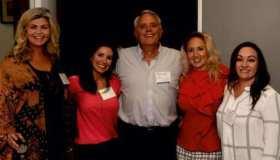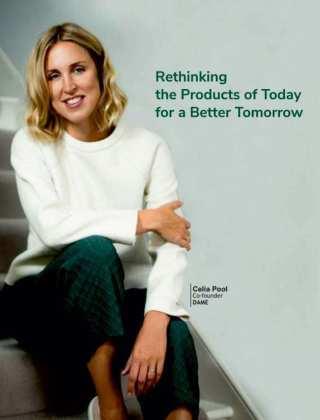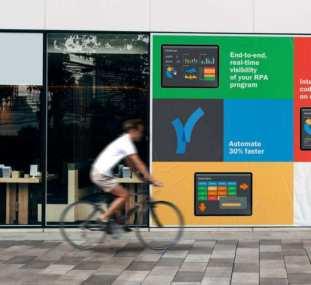




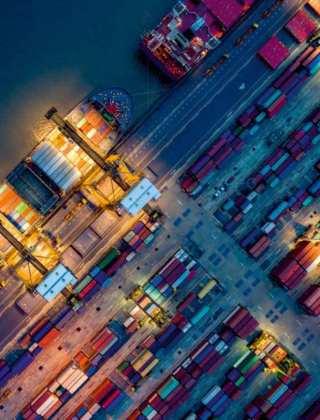




Tclogged up. Before the pandemic, the supply chain played the role of a functional and supportive system and was rarely brought up in boardroom discussions among the top-level management. But enter into the 2020s, and it has become a matter of much hullabaloo in the c-suite. And why not?
he plumbing is hardly ever a topic of conversation unless it's
The formula milk shortage in the U.S only stresses the lessons of the previous two years. Diversified, agile, and flexible supply chains have become necessities for businesses in the 21st century. Organizations with superior supply chain efficiencies will be able to move faster and gain an advantage over their competitors.
The best example of the benefits of making supply chains your core competency is Amazon. Amazon's world-class supply chain continues to give the company its edge in an extremely competitive market. This competency is what positioned Amazon to gain the advantage during the pandemic shooting its profits to the heavens above.
Therefore, it is with obvious expectancy that the supply chain has swept into the c-suite rooms. There is much to be attained and everything to be lost without making the supply chain a c-level concern. With this understanding, CIOLook is releasing the edition of “The 10 Most Influential Leaders in Supply Chain.”
In between the pages of the magazine, you will find interviews with experts who have been successfully navigating the 21st-century
challenges in supply chains. Their domains are as varied as their approaches which will only give a comprehensive look into the functionality of supply chains of varied spheres. You will also find the expertise of the industry professionals written from a CxOs standpoint. Don't forget to give them a read too.















DESIGN
FOLLOW US ON
WE
ALSO AVAILABLE
Copyright
US ON
2022 CIOLOOK, All
reserved. The content and images used in this magazine should not be reproduced or transmitted in any form or by any means, electronic, mechanical,
recording or otherwise, without prior permission from CIOLOOK.
rights remain solely
CIOLOOK.
Benjamin Gordon, Managing Partner
Bill Mrzlak, President
Chitra Shinde, Vice President Operations
Cambridge Capital LLC cambridgecapital.com
ChainSequence chainsequence.com
DHL Express dhl.com
Connor Roe, Supply Chain Analyst
Ernest Nicolas, Chief Supply Chain Officer
John Smith, President & Chief Executive Officer
Mindy Davis, Vice President, Global Marketing
Philippe Gilbert, President
Sara Braun, Head of Supply Chain
Steve Flagg, CEO & Founder
Intel intel.com
HP hp.com
Cambridge Capital is a private equity firm investing in the supply chain sector.
ChainSequence® is a unique consulting group with extensive hands-on experience in high-tech manufacturing in combination with broad consulting experience in Supply Chain management.
DHL is the global leader in the logistics industry. Specializing in international shipping, courier services and transportation.
Intel’s mission is to shape the future of technology to help create a better future for the entire world. By pushing forward in fields like AI, analytics and cloud-to-edge technology.
HP Inc. is an American multinational information technology company that develops personal computers, printers and related supplies, as well as 3D printing solutions.
FedEx connects people and possibilities through our worldwide portfolio of shipping, transportation, e-commerce and business services. Fedex fedex.com
Sap sap.com
With a global network of customers, partners, employees, and thought leaders, SAP helps the world run better and improve people’s lives.
UPS is committed to moving our world forward by delivering what matters. UPS ups.com
GSK gsk.com
Supplyframe supplyframe.com
GSK is a multinational pharmaceutical and biotechnology company that makes innovative vaccines and specialty medicines to prevent and treat diseases.
Supplyframe was founded with a vision of transforming the way innovators interact with electronic component suppliers, distributors, and manufacturers.
Mindy Davis, VP, Global Marke�ng SAP



Discover the innovations your business can leverage today to become a more resilient, sustainable, and intelligent enterprise.


upply Chain can be a source of strength or
S vulnerability," these words from Mindy Davis rightly explain the powers of a well-oiled supply chain a company possesses. At the same time, she also states the magnitude of instability that can occur when the supply chain falls apart. Working with this transformative mindset, Mindy has crafted a rewarding experience throughout her tenure at SAP as the Vice President Global Marketing. She is disrupting the marketing niche and the supply chain domain, which go hand in hand with a resilient, innovative, sustainable, and customer-centric approach.
Mindy cancels out the risks and shortfalls in global supply chains by utilizing the vast experience she gained while working with customers, understanding their challenges, and learning from those experiences. At SAP, she has been at the center of implementing the processes for planning, sharing, and manufacturing supply chains with digitalized platforms. As an established leader, she has also been a voice for women in the supply chain by interacting with her female counterparts through social platforms.
Let's glide into her enthralling experiences and learnings with her insightful stories;
Backed by an attitude that is driven by excellence and a very strong work ethic, Mindy created a fruitful career at SAP. She stepped into a leadership role about four years ago. Her peers look up to her to set the strategy and guide them toward success. Mindy mastered the challenge of evolving from an individual contributor to a strategic leader. She learned how leading with empathy can truly earn trust and respect as a leader. Amplifying this strategy at the organizational level, she worked towards improving people's lives with sustainability at the core at her company, SAP.
Mindy has been with SAP for over 15 years. As a global organization with employees from 150+ nationalities, she aims to make the employees feel free to be their authentic selves for the company to perform at its best. The company is committed to being one of the most diverse and inclusive software companies in the world. It proactively promotes diversity, inclusion, and social justice and work to ensure that its workforce reflects the gender parity and demographics of all the regions. Constant efforts are made to ensure that all stages of the employee lifecycle are inclusive to enable employee success, hold leaders
accountable, and build a diverse ecosystem – both internally and among the partners and customers.

With technological innovation, unprecedented business growth has been made possible. Mindy plans to leverage advancements like cloud, a technology which has immense potential. With a forecast of $1 trillion growth by the end of this decade, she plans to capture a huge share of the domain. To survive in this cutthroat competition of upgrading, Mindy has enlisted 3 critical issues SAP has faced. The focus is on these points for the company to drive change now:
Develop New Business Models: To avoid disruption in your industry, create new offerings and new revenue streams. The cost of NOT doing these things leads to disruption in the industry and, ultimately the company.
Drive New Operational Efficiencies to Fund Growth: By taking advantage of new technologies for process automation – such as AI, IoT, ML - and innovation with SAP Business Technology Platform and iOS, to extend solutions to make it easier for PEOPLE to work and gain a competitive advantage over competitors.
SAP solutions can help you optimize your supply chain for lower emissions and greater profit.
Transform Mission-Critical Systems Without Interruption: The cost of IT downtime for an average Fortune 1000 enterprise is high and only increasing as digital systems will be at the heart of every company.

Mindy further provides a framework for details about an E2E supply chain. Businesses are more dependent on each other than ever before. As businesses become more specialized and as customers and competitors raise the pressure on pricing, speed, individualization, and sustainability, already intricate supply chains get increasingly complex.

Here are the principles Mindy endorses to use the supply chain of a company to an advantage:
Ÿ The Top Line: While any business intends to grow revenue, it's those that use their supply chain as a differentiator that lead the market. They connect insights, processes, and people to innovate and introduce new products faster or transition from one-time product purchases to ongoing service revenues. Consider Industrial Machinery manufacturers who successfully transition to assets as a service by managing service delivery together with pricing, contracts, cost structures.
Ÿ The Bottom Line: It's about increasing margin and unlocking efficiencies. SAP helps increase margin by digitally transforming factory and plant processes for uninterrupted production with Industry 4.0 best practices, integrated from product design to manufacturing and logistics while anticipating, planning, and providing stability across entire supply chains.
Ÿ Unlock new efficiency with intelligent automation across all mission-critical processes. With the Internet of Things or Artificial Intelligence embedded into the supply chain and manufacturing processes, things can be shifted like predictive maintenance to predict machine breakdowns on your plant floor and fix problems before they happen to prevent downtime. There is transparency created in production management to assess and resolve quality and productivity issues quickly.
Ÿ Managing the Green Line Growth: Just a short while ago, sustainability and profitability were perceived as mutually exclusive. Now, they are synonymous because customers only want to do business with environmentally responsible, safe, and ethical companies. A supply chain is a great place to start when SAP operationalizes sustainability across entire supply chains from design to operation. Data transparency for energy monitoring or consumption in the manufacturing processes is provided or there is a system in place to monitor emissions of the company's trucks on the road and identify quicker routes to reduce emissions.
With SAP, fully paperless production processes and 100% traceable production from raw materials to finished parts is done through Smart Press Shop.
Disruptions will happen, but companies can respond reactively or with resiliency. Digital businesses don't just react and create unnecessary costs and delays – they
anticipate and adapt ahead of disruptions to reduce costs and continue to deliver for their customers. In Marketing, Mindy helps businesses digitalize their supply chains and operations to establish resiliency and thrive in a changing economy.
Through digitalization, companies can take advantage of vast amounts of data, information, analytics, and technology platforms to handle disruptions better, faster, with less complexity, and at a lower cost than reactive value chains.

Intelligent data makes supply chains resilient and highly adaptable. When mountains of real-time, actionable data are combined with the latest technologies and smart analytics and then shared across every part of operations, smarter decisions are made, risks are reduced, opportunities are seized, and crises are averted.
Mindy believes that it's the time to either modernize or fossilize. She says, "Throughout history, technology follows an interesting pattern. Things get incrementally faster, smaller, and more innovative. And then, BOOM, gamechanging technology hits. Products leap ahead, industries change, and new markets emerge. Supply chains and operations are going through this right now. We've all been collecting data for some time now. But the combination of cloud, IoT, AI, analytics, big data, and machine learning are creating a perfect storm of change to the traditional, siloed supply chain processes. “
Most modern manufacturing brings the possibility of reconfiguring factories to adapt to seismic market changes or fleeting market opportunities. Technology makes it sustainable and environmentally responsible. The result is a living, breathing, real-time, data-driven supply chain that becomes the epicenter of the entire business. Technology and real-time data have created a new tipping point for manufacturers. She emphasizes, "Titans will rise, and laggards will fall painfully behind. It's time to modernize or become fossilized."
The disruptive phase in a business is ongoing. The next significant change in the marketing sector Mindy's seeks to address is disruption with resiliency to improve visibility, productivity, connectivity, and sustainability.
Business leaders are bracing for a possible economic downturn as the U.S. Federal Reserve raises interest rates
and pushes up borrowing costs to combat inflation currently running near a 40-year high. Continued supply chain problems and higher energy costs are creating additional uncertainty.
SAP's Take: While most economists are still cautious about predicting a recession because consumer spending, the main driver of the U.S. economy, remains strong, the shifting economic outlook has refocused attention on technology that can improve efficiency, enhance business agility and address supply chain issues.
Company executives, including CIOs — especially those who have experienced previous downturns know that in order to thrive in a challenging economic environment, they need to build resiliency and invest in technologies that provide them with greater insight into their business operations and enable them to react quickly to challenges and opportunities.
Mindy shares, "As a Harvard Business Review article noted, it is tempting to think of a recession as a time to batten down the hatches and play it safe. However, downturns actually appear to encourage the adoption of new technologies. That's often because digital technology can make businesses more transparent, more flexible, and more efficient."
Get customer-centric products to market faster and at less cost with global supply chain management (SCM) software and tools from SAP.
Marketing can help shine the light on how organizations can create responsive design-to-operate processes and a customer-centric supply chain that is the backbone of businesses.
At SAP, the team aims to create a continuous design-tooperate process and bring the following four key principles to each and every part:

Synchronize planning company-wide: Integrating customer input, demand signals, finance, sales, service, and logistics across your operation and supply chain to improve speed and responsiveness.
Reinvent production and services: Using intelligent assets, processes, and Industry 4.0 best practices to increase output while quickly adapting as demands and priorities shift.
Operationalize sustainability: Embedding ethical sourcing and sustainable manufacturing practices and priorities across the design to operate a process that help businesses reach its carbon footprint, equality, and reusability goals faster.
Redefine trading partner collaboration: Connecting every supply, logistics, and asset management provider on a unified business network that uses dynamic workflows and real-time data to increase the pace of business.
Speaking about her vision for the future, Mindy concludes with, "I want to ensure companies use their supply chain as a competitive weapon to safeguard themselves against disruption that will help grow revenue and establish deep customer relationships.”






Cambridge Capital’s philosophy is to invest in companies where its operating expertise and in-depth supply chain knowledge can help top entrepreneurs and management teams grow their businesses.

When we receive a product or service in our hand, we associate the delivery of the commodity with the said brand. As a matter of fact, to bring the product to people, there is a network of mediators disseminating in a system. This system acts as a facilitator and is gratified by the Supply Chain sector.
Supply Chain is the link between producer and customer and between the supplier of resources to the producer. However, if the supply chain looks after the needs of both the manufacturer and the customers, who fulfils the sector’s requirement, such as recapitalization, expansion, and so on?
To cater to these needs of supply chain mediums, the supply chain expansion and acquisition investors play an important role in ensuring prompt and reliable services.
Benjamin Gordon, the Managing Partner of Cambridge Capital, is an investor in the supply chain niche. Benjamin holds a vast segment of experience in the supply chain sector prior to stepping into the private equity firm Cambridge Capital. The company oversees investing in the applied supply chain by providing finance for the expansion, recapitalization, or acquisition of growth-stage companies in the sector.
With his caliber specifically oriented to the supply chain sector, Benjamin is determined to provide effective and reliable solutions for emerging companies in the supply chain niche.
Let us go through his journey to know the virtues by which he stands on the top in this sector.
In 1999, Benjamin Gordon founded a SaaS logistics company called 3PLex. He raised traditional venture capital from major financial institutions, including Goldman Sachs and Morgan Stanley. They ultimately sold the business to Maersk, later selling it to IBM.
As part of his experience with 3PLex, Benjamin believed there was a need for a supply sector-focused investment firm comprised of traditional senior investment professionals and relevant operators with a track record of success who have built significant companies in the sector.
The supply chain is in Cambridge Capital’s DNA. Benjamin has spent his career building businesses in logistics, first with 3Plex, then with BGSA, then with a series of other companies like EcoSquid and GreenScreens.ai, and now with Cambridge Capital.
“Cambridge Capital seeks to be a founder-friendly and high-impact investor. We aim to make a small number of high-conviction investments per year. Our goal is to provide practical, hands-on assistance in all functional and strategic areas critical to growth-stage companies in the supply chain,” states Benjamin.
The company’s philosophy is to invest in firms where the operating expertise and in-depth supply chain knowledge can help top entrepreneurs and management teams grow their businesses.
Cambridge’s supply chain sector focus, unmatched network, solid historical results, and unique blend of deeply experienced investors and operators present an

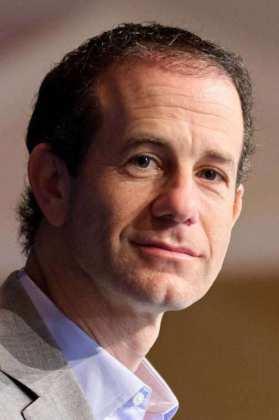
attractive opportunity for companies to choose Cambridge and achieve outstanding value growth.

Benjamin says, “Cambridge has built on a long history of excellence in advising, building, and investing in the supply chain sector. Our professionals have deployed over $2.5 billion in capital across equity investments and acquisitions of more than 50 supply chain/technology companies.”
Investing in the supply chain is all Cambridge Capital does. It partners with companies whose unique domain expertise and operating capabilities will help drive the next chapter of its growth.
Cambridge’s supply chain sector focus, unmatched network, solid historical results, and unique blend of deeply experienced investors and operators present an attractive opportunity for companies to choose Cambridge and achieve outstanding value growth.
Supply chain software companies have always been attractive areas to invest in. Cambridge Capital believes that best-of-breed niche leaders are an underappreciated opportunity to succeed.
Benjamin strongly believes in humanity with technology, “‘Man + Machine’ Wins. Tech-enabled 3PLs, or even 3PLs that are more services-based, will continue to provide value for shippers based on specialization, capabilities, and density – not everything can be fully automated purely by technology.”
This is the thesis that led Cambridge Capital to acquire a majority interest in Everest Transportation Systems and to invest in SaaS leaders like GreenScreens.ai. As video telematics and voice/data networks mature to allow for real-time edge computing, there is a universe of exciting companies that will achieve significant success (by replacing older commodity GPS tracking vendors)
While capital has flowed into a few unicorns in the sector, Cambridge Capital believes that other techenabled forwarders, especially those who understand the legacy business model’s profit drivers, will be more successful.
Like forwarders, Cambridge Capital believes the best “digital” brokerage opportunities are to invest in brokers undergoing a digital transformation, given the importance of reputation, relationships, density, and market share.
“Enabling More Efficient Last-Mile Delivery” is the goal of Benjamin. He says, “The COVID-19 pandemic accelerated e-commerce penetration in the US from 16% to 34% of all retail sales, resulting in 10 years of expected e-commerce penetration growth in just three months. As a result, Ecommerce logistics companies benefit.” This led Cambridge Capital to invest in companies like Byrd and ReverseLogix.
Last-mile delivery is a $115B industry and is currently the most significant cost driver in the supply chain; companies that innovate and enable more efficient lastmile delivery options will succeed. It led Cambridge Capital to back Bringg and DeliveryCircle.
Unraveling the Subsequent
Saving Money, Time, and Reputation of Global Shippers. Local incumbents usually dominate the fulfillment and delivery of goods. Still, increasingly shippers/sellers want to consolidate vendor relationships and be able to monitor all their activities globally from a consistent vendor.
The recent advances in productizing AI and ML at scale create a new class of companies that can automatically cure supply chain issues, saving considerable money, time, and the reputation of global shippers.
Cambridge Capital’s preferred investment size is $1050 million in equity investments. The company provides capital for growth, strategic initiatives, acquisitions, and shareholder liquidity. Cambridge Capital is willing to invest in a majority or minority capacity, and it invests in partnership with management to add tangible value.
“
The next level of supply chain visibility connects all stakeholders in a shipment onto a trusted platform. It enables ‘higher Pixel’ visibility that provides predictive analytics and machine learning, leading to enhanced supply chain resiliency and efficiency. This thesis led Cambridge Capital to back Parcel Perform,” concludes Benjamin.



A success to a long string of disparate yet interdependent processes. And, as most of us have learned more recently, maximum supply chain functionality also depends on seemingly unrelated global events, both large and small. To best meet demand, proactive planning is key.
truly effective supply chain actually owes its
However, in the past two-plus years we have seen global disruptions, due to COVID-19, volatile weather, and slow-to-respond, reactive planning do their worst to turn the global supply chain infrastructure on its head. In some critical cases, it even stopped functioning altogether.
While catastrophic or unexpected events cannot be avoided, with the power of human intelligence, we can craft proactive solutions that can more rapidly restore economic equilibrium and further business growth and investment. One such leader facilitating smooth deliveries globally is Bill Mrzlak, who has been working exclusively within the supply chain sector since 1995.
He is the President of ChainSequence and continues to be an unstoppable force when it comes to guiding his client partners in achieving more committed, effective, and competitive sales and operations planning with innovative solutions that are geared toward long-term success.
We recently caught up with Bill to discuss his ongoing work in this space, and are excited to share these interview highlights as well as several well-earned insights below:
Brief our audience about your journey as a business leader until your current position at ChainSequence. What challenges have you had to overcome to reach where you are today?
Until the mid-1990s, I was among the top-producing partners working at a large management consultancy firm, serving clients within a wide range of industry sectors. In 1995, I pivoted to manufacturing concerns and started working exclusively in the supply chain sector. From that moment forward, I found my passion, and it has continued to grow my knowledge of all things related to Supply Chain and Sales & Operations Planning.

In 2009, I launched my organization, ChainSequence, a premier supply chain and S&OP consulting group. Recognizing that my practice serves a niche market, I succeeded in this highly competitive field through undisputed expertise and excellent client service in two primary areas – S&OP and supply chain planning.
Hard-won experience has taught me that you can't be all things to all clients, but by doing what you do best, you can be the partner of choice. Clients attest that this enduring enthusiasm still comes through in each of my engagements.
Tell us something more about your company and its mission and vision.
ChainSequence's mission statement is clear: “Committed to helping enterprises identify challenges, create innovative solutions, and implement lasting improvements in Supply Chain processes to advance Sales & Operations goals.”
We're able to achieve our mission by following an inclusive, collaborative approach,
Ÿ
Maintaining an extensive knowledge base of S&OP and supply chain planning principles for a vast spectrum of industries and geographical locations.
Adhering to our philosophy and fundamental

practice of knowledge-sharing with our client partners to ensure ownership of each solution; and

Ÿ Quickly assimilating into our client partners' environments, becoming an integral part of both the team and the solution.
Enlighten us on how you have impacted the supply chain niche through your expertise in the market.
The demand for S&OP and supply chain expertise has never been higher, so the sheer number of supply chain consulting groups currently working in the manufacturing space comes as no surprise. To succeed in this crowded field, a consulting firm must develop and commit to a differentiator that allows its services to stand out.
First, we have deliberately broadened our client partner base to include semiconductor and electronics, CPG/Food and Ag, Medical/Pharma, and modular furniture systems, among others.
Second, we leverage our experience, best-practices expertise, and proven knowledge-share approach with customizable services that maximize the data-driven strealities of the 21-century manufacturing and commerce.
Our cross-industry knowledge-sharing empowers our client partners to apply best practices they might not have previously considered. It brings a higher return on their investment and furthers our expansion into new markets.
Describe in detail the values and the work culture that drives your organization.
From its inception through today, ChainSequence only focuses on two primary service offerings: S&OP and supply chain planning. While other areas reside under the supply chain umbrella—warehouse space planning, logistics, etc.— ChainSequence's philosophy stresses top-tier excellence in our two offerings, which impact an organization's bottom line the most.
Our expertise shows and is consistently recognized through feedback and referrals from our client partners. It is common for us to periodically return to our client partners, providing solutions to evolving issues in today's changeable business climate.
We also have individuals with whom we have worked for 15+ years, moving with them as they transition from one organization to another and as they progress in their careers.
Undeniably, technology is playing a significant role in almost every sector. How are you leveraging technological advancements to make your solutions resourceful?
ChainSequence is an enthusiastic advocate for technology, but as an integral tool to execute solutions, not the solution itself. Some company execs hold on to the false premise that implementing the latest advanced technology will reduce systemic problems. It's crucial to remember that People and Processes come first.
Technology can only provide serious improvements and competitive advantage once an organization completes its due diligence by defining and developing a rigorous, end-to-end process that will ultimately govern the technology at the center of its business.
ChainSequence's decades of wide-ranging technological experience serve as proof that “systems are dumb and require instruction.” Further, instruction can only come from those key enterprise stakeholders who clearly understand: 1) what is most important; and 2) the key drivers of their success. Only then can you make a system selection that best serves those requirements and configure it appropriately during implementation.
That said, ChainSequence is leveraging newer technologies such as AI and ML to greatly improve our
client organizations' ability to better plan demand. While traditional statistical models can only project the future based on the past, these new AI/ML models can predict the future by correlating many different data points.
These models might work more effectively in certain sectors but are still useful tools overall. Again, it still takes stakeholder knowledge within the business organization to identify those relationships that a technical resource would use to code the AI/ML model.
What, according to you, could be the next significant change in the global supply chain sector? How is your company preparing to be a part of that change?
For years, S&OP was considered a nice-to-have business luxury rather than the must-have operational necessity as it is recognized today. Then COVID-19 happened, catching many organizations off-guard in two ways.
First, unexpected plant closings resulted in excess manufacturing capacity. Then, when plants started up again, manufacturers couldn't bring capacity online fast enough. Material shortages, long lead times, and surging customer demand put further pressure on already strained supply chain organizations.
Companies are now staring down the barrel of multiple international health crises, climate change, and other unknown events which will continue to disrupt global commerce.
The need to better plan strategically has become a very high priority, and organizations are fully embracing S&OP as the game changer that will drive long-term

business growth. The volume of client requests for services in this area continues to increase, and we are well-positioned to answer the call.
Where do you envision yourself to be in the long run, and what are your future goals for ChainSequence?
ChainSequence enjoys a well-established presence in the U.S. market. Many of our client partners have operations located all over the world (Europe, Asia), and we work on-site with them wherever needed. In the past several years, we have expanded into new sectors, and our portfolio includes several client partners in Europe, which continues to grow. Demand for our S&OP services is increasing more than ever as global supply chain shortages, long lead times, and labor shortages continue to challenge enterprises. With proactive planning through an S&OP process, we can help an organization minimize the impact of these challenges.
What would be your advice to budding entrepreneurs who aspire to venture into the supply chain sector?
We would advise those aspiring entrepreneurs that working in the supply chain sector is not for the faint of heart. Competition can be very high and global supply chain networks can mean long days to accommodate different time zones and involve a great deal of longdistance travel. Solving problems in new industries is equally challenging.
However, because the principles of supply chain planning transcend virtually every industry and sector – from semiconductors to clothing, fruit processing, and washing machines – the same rules generally apply. And you will meet many interesting people, learn about other cultures, and visit fascinating places. For me personally, it continues to be a gratifying career.









Ipotential, but once unleashed, they have a direct route to success. Their capability and abilities are undeniable when they find themselves in a leadership role. However, it is simple to claim this, which creates the need to outline multiple benefits women can bring to leadership roles.
n today's world, women may not always realize their
DHL Operations and worked for the next 15 years in Papua New Guinea, Fiji, Australia and New Zealand doing various roles in Operations and IT before returning to India. In 2019, I made the permanent move back to New Zealand as Vice President, Operations, DHL Express NZ.
We have all seen women demonstrate passion, enthusiasm, and the capability to take command of a situation when needed. Women can make bold and wise decisions as leaders; this helps make the team environment less authoritative and more cooperative, bringing a family-like feel to the team. This boosts teamwork across the organization and helps implement a new culture within the business. With these significant qualities, Chitra Shinde excels as a proficient leader and an influential leadership persona in the modern industry.
Chitra is currently working as Vice President, Operations at DHL Express, a company that aims to be the ' Logistics company of the world,' with the purpose of 'Connecting People and Improving Lives .’
In an interview with CIOLook, Chitra shared valuable facts highlighting her substantial leadership qualities and her contributions to scaling DHL Express' operations and progress to greater heights.

Below are the excerpts from the interview.
Chitra, please brief our audience about your journey as a business leader until your current position at DHL Express. What challenges have you had to overcome to reach where you are today?
I joined DHL Express in 1994 as a Management Trainee in Mumbai, India. From this role, I chose to work within
As a leader across multiple roles, I shifted execution focus to futurizing the operation through standardization, scalability and sustainability. I focused on developing high-performing teams, and this, in turn, developed my own competence. I also had to shift my own mindset from being operationally focused to being insanely customer focused.
My challenges have been mostly around juggling multiple roles of mother, daughter, and wife and being career-focused. It was not unusual for me to be the only woman in the board room, but I have worked with some exceptional colleagues who made it easier.
Tell us more about DHL Express, its mission and its vision in the modern industry.
DHL Express is a division of Deutsche Post DHL Group. Our Vision is to be the 'Logistics company of the world,' with the purpose of 'Connecting People and Improving Lives.'
At DHL Express, we focus on our core product, Time Definite International Express. We do this through our proven strategy for the last decade of developing our people through our internal certified specialist programs. We believe that our motivated people drive excellent service quality for our customers, which keeps them loyal and results in making us profitable.
We continually improve our processes and systems and adapt to the voice of our customers.

DHL's sustainability roadmap is a structured approach to addressing environmental, social and governance that impact our people, customers, and partners in a transparent and ethical way.
Chitra Shinde, Vice President, Operations DHL Express
We have stepped up our sustainability and compliance programs through even more focus on the environment, community, and governance.
Enlighten us on how you have impacted the supply chain industry through your expertise in the market.
During the Covid-19 lockdowns, we have experienced massive peaks and troughs through market reliance on Express to continue to operate as an essential service. Overnight we lost access to commercial carriers, putting a demand on us that was higher than any peak we had experienced before. We responded by introducing new routes, new flights, new processes, facilities, and people. We innovated as we progressed. It was the most unpredictable and, therefore, exciting time in my career. We carried time critical medical supplies and plant equipment, vaccines, aircraft parts and critical travel documents around the world.
Necessity became the mother of innovation, and creativity thrived. We came up with solutions previously not considered or thought possible. There was no disruption to service, not on a single day.
Describe in detail the values and the work culture that drives your organization.
Our values are based on Delivering Results without compromising on Respect. Supply Chain and Logistics is fraught with easily breakable links and interdependencies, which can create a high-pressure environment. It was necessary for us not to allow speed and urgency to come in the way of Respect. We have a culture of continuous improvement we call First Choice. We use tools like GEMBA, Performance Dialogues, 5S and DMAIC methodology to reduce and eliminate defects in our process. The supply chain is synonymous with teamwork. We set our performance metrics around collective success and working As One.
We train our people on what it means to be a successful 21st Century Leader and an Inspirational Leader who can empower, coach and develop our people. We focus on inclusion, collaboration and diversity. In New Zealand, we take great pride in having women in roles that were traditionally male-dominated like our frontline operations team in our gateways.
We went from 5% to >50% in 5 years through implementing Mechanical Handling Equipment (MHE) that was suitable, appointing women in supervisory and frontline leadership roles.
Our Environmental, Social and Governance agenda is a key priority, and we are seeing positive traction in our environmental initiatives. As a market leader, it is important for us to lead and set the standards in our industry.
Undeniably, technology is playing a significant role in almost every sector. How are you leveraging technological advancements to make your solutions resourceful?
Our Digitalization strategy is built around customer experience, employee experience and operational efficiency. We have global programs that apply to all countries and local initiatives that address specific local requirements or challenges that can be solved through technology or automation.
What change would you like to bring to the supply chain industry if given a chance?
The Covid-19 pandemic has exposed the frailty of global supply chains and the risks associated with justin-time followed by overstocking just-in-case. I would like to see better risk assessment and risk management in purchasing decisions across the value chain. There needs to be a balance of cost vs risk. The lower cost focus on procurement and transport has led to a greater exposure of being caught up in supply and demand swings of industries and trade lanes.
Secondly, I would like to see convergence of the Tech world with Supply chain. Traditionally Tech has been an enabler for Supply chain. I would like to see Tech being the centrifugal force to modernize supply chains. Our Industry is in the nascent stages of harnessing technological development. We are not on the radar of software graduates and professionals as an Industry with opportunity.
What, according to you, could be the next significant change in the supply chain sector? How is your company preparing to be a part of that change?
Emerging out of lessons learnt from the Covid-19 pandemic, there will be more diversification of sourcing
and movement of distribution centres and potentially closer to markets. This is likely to create new opportunities and new players.
Last mile disruption and drone delivery for high altitude and low density locations.
We should expect to see more data-driven and realtime decision-making capability using Machine learning, AI, Twin technology, Virtual reality, IoT, Blockchain, Cloud, Crypto currencies etc. A holistic approach to digitalization that can make predictions about future conditions.
Cybersecurity, Data Protection, Trade sanctions, Internet Protocol, Intellectual Property rights, along
with an escalating cost of Compliance requirements. There will be more shifts in multimodal transport via –Air, Rail, Sea or combinations preferring the most environmentally friendly options. We expect more corporations to drive CO2 emission reduction, thereby driving a shift from fossil based to green energy in transportation. Governments will start to focus on beyond-this-election to long-term infrastructure needs through regulation, subsidies, and penalties that would influence consumption behavior.
Our company plays a leading role in this space with a modernized aircraft fleet, Sustainable Aviation Fuel (SAF), R&D investments, investments in Electric aircraft, collaborating with partners, suppliers and customers, and transitioning to a 60% green fleet by 2030 for the first mile and last mile. We set audacious goals and find innovative ways to meet these goals.
Where do you envision yourself to be in the long run, and what are your future goals for DHL Express?
We will continue to keep the customer at the center of everything we do and adapt as they evolve their supply chain models. Our sustainability roadmap is a structured approach to addressing environmental, social and governance that impact our people, customers, and partners in a transparent and ethical way.
We set the Industry and Global standards in these areas. We are already No1 Great Place to Work, so our focus is to Futurize and Humanize through diversity, equity and inclusion. Developing leaders who demonstrate authenticity, empathy, vulnerability, and emotional Intelligence, build trust, care personally and challenge directly to strengthen our coaching and timely feedback culture.
What would be your advice to budding entrepreneurs who aspire to venture into the supply chain sector?
My advice would be to be personally resilient and visible, just like a good supply chain.









